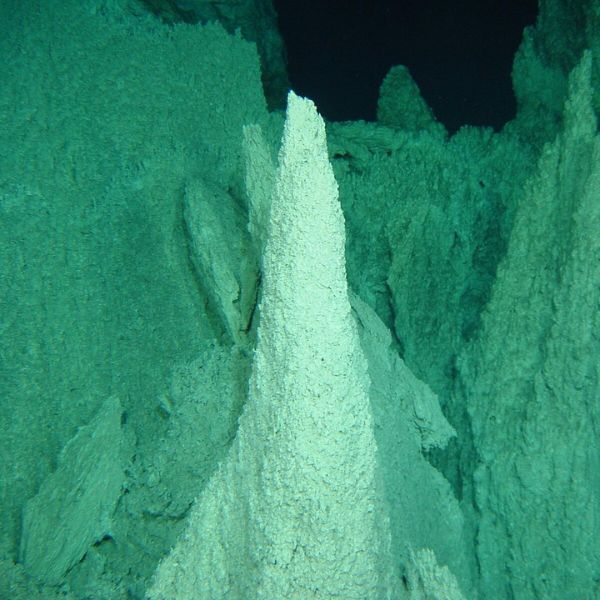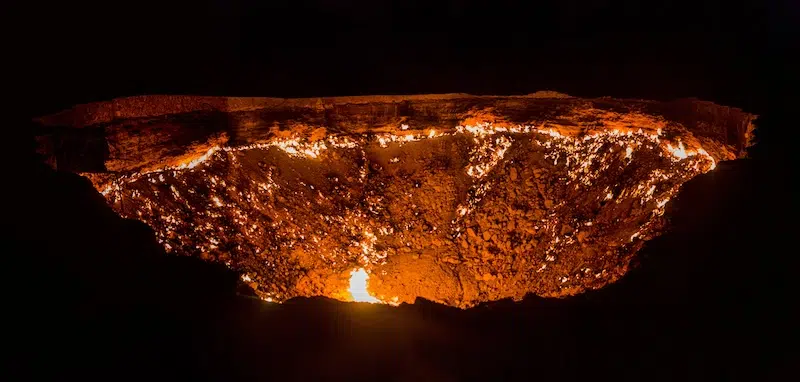
Photo: mathes/Depositphotos
Nearly 55 years after first being unintentionally set on fire, the Darvaza gas crater is finally showing signs of dying down. Located in the heart of the Karakum desert in Turkmenistan, this crater is also known as the “Door to Hell” or “Gates of Hell” because of the fires that have been taking place within it since 1971.
How this fiery crater came to be is an interesting piece of little-known history. The Karakum desert region of Turkmenistan was part of the Soviet Union in the 1970s. Soviet engineers were interested in mining the desert for oil fields, so upon their arrival, they drilled for quality testing. Instead of finding oil, however, the engineers found something much more volatile: a large natural gas pocket that was unable to support the weight of heavy oil rig machinery, and subsequently collapsed.
This collapse brought down the entire scouting camp along with it, leaving behind a massive, bowl-like basin measuring 230 feet wide and 100 feet deep. To make matters worse, the natural gas that had been trapped in that pocket began leaking out into the atmosphere at an astounding rate, endangering local wildlife and nearby communities.
Scientists sought to burn off the natural gas as an end-all solution, estimating it would take a few weeks to resolve. In reality, the Darvaza crater has been burning for decades, and it’s only in 2025, nearly 55 years after its inception, that the fires of the Gates of Hell seem to be subsiding.
According to Turkmengaz, the state-subsidized national gas company, the Darvaza crater’s flames have demonstrated a visible weakening as of June 5, 2025. Scientists who monitor the crater’s fires presented research at the International Scientific and Practical Conference on Environmental Aspects of Innovative Technologies in Hydrocarbon Development (TESC 2025) that indicates the flames have diminished to nearly a third of their original size.
Scientists have also observed that the crater fires are now only visible when up close to the cavity, whereas in the past, its flames could be seen miles away. Turkmengaz officials and scientists are hopeful that this rapid decline is thanks to an exhaustion of natural gas stores, meaning that the blazing crater may be on its way to finally dying out.
The news is welcome amongst the citizens and leaders of Turkmenistan. The burning crater has long been a topic of discussion, with many opining that the continuous burning of precious natural gases is simultaneously wasteful and dangerous. The gradual extinguishing of the Darvaza crater marks the possible end of one of the world’s most unusual man-made phenomena. As the fires wane, they close a decades-long chapter in Turkmenistan’s landscape and history.
An accidental man-made crater from the Soviet era that has been burning for 54 years in Turkmenistan is finally beginning to die down.
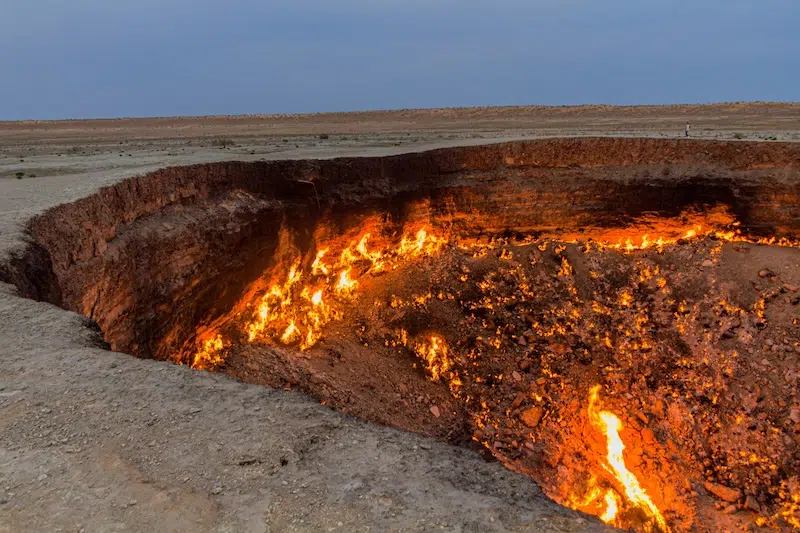
Photo: mathes/Depositphotos
The Darvaza gas crater is also known as the “Door to Hell” or the “Gates to Hell” because of the fires that have continuously burned in it since a natural gas pocket beneath the earth collapsed in 1971.
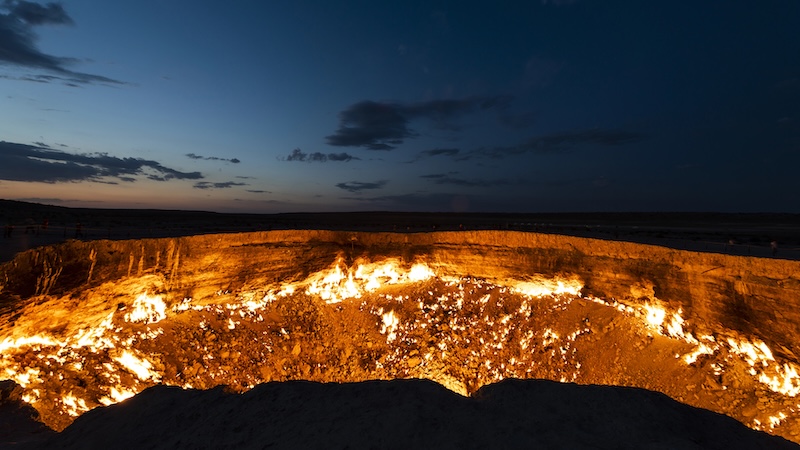
Photo: Kloeg008/Depositphotos
However, as of June 5, 2025, national authorities have reported that the crater's flames have decreased significantly.

Photo: AlexelA/Depositphotos
This news comes amid discussions related to the precious natural gas wasted as a result of the original 1971 accident, and may signify the end of an era for Turkmenistan's landscape and history.
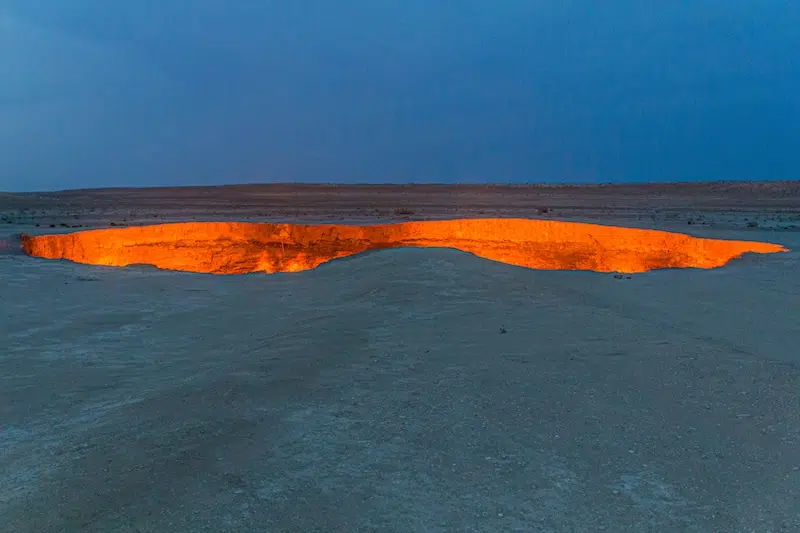
Photo: mathes/Depositphotos
Sources: Soviet-era gas crater ‘Door to Hell’ is finally dying down after 50 years of burning; Turkmenistan's achievements in reducing methane emissions announced at TESC 2025
Related Articles:
Giant Fire Pit in Desert Known as “Gates of Hell” Has Been Burning for Over 50 Years
Rare Red Sprites Captured Lighting up the Tibetan Night Sky Like Jellyfish-Shaped Firework
Surreal Oil Paintings Depict a World Consumed by Catastrophic Forest Fires
Unnerving GoPro Footage Shows Firefighter’s Point of View While Battling a House Fire




















































































